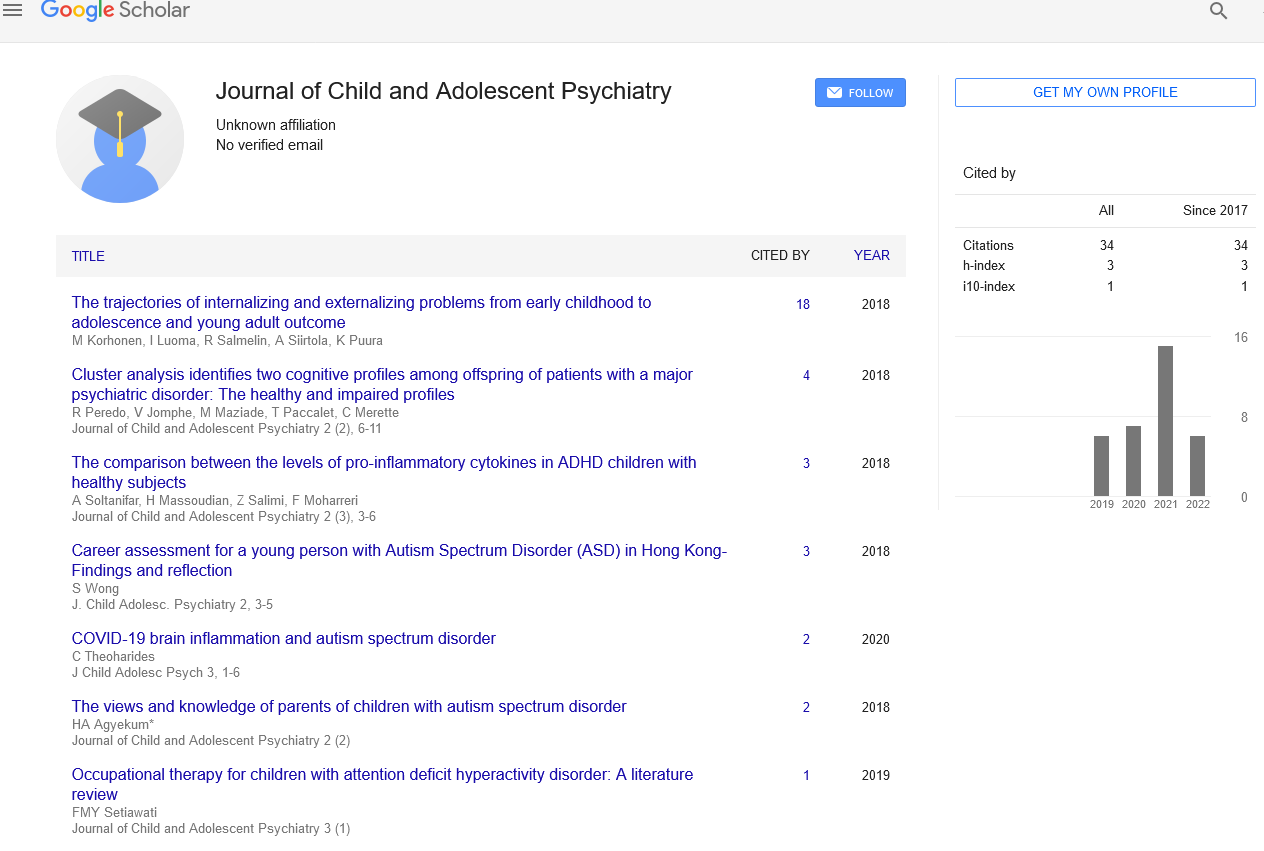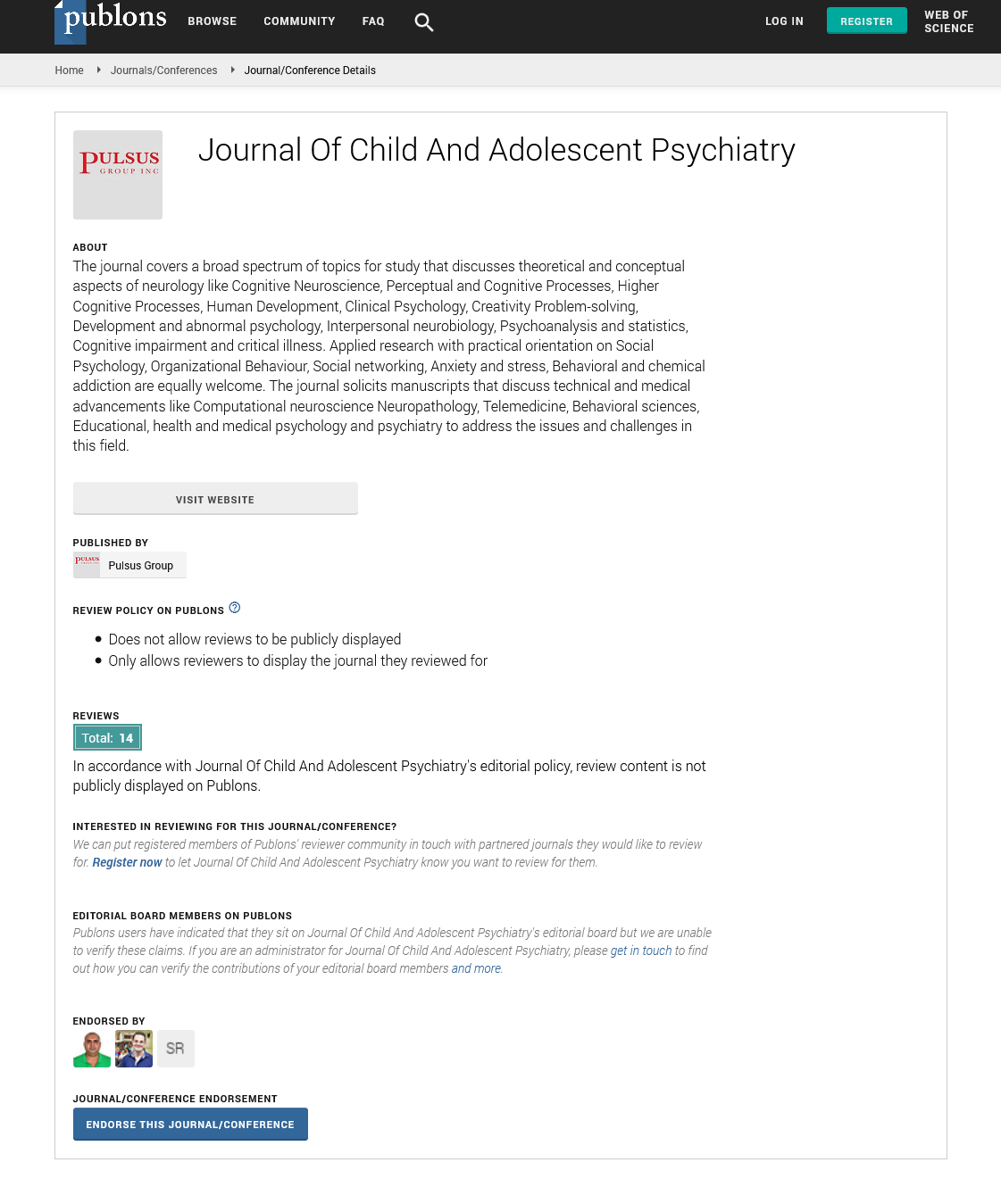utilization of digital media for self-expression in children and adolescents
Received: 02-Dec-2021 Accepted Date: Dec 10, 2021; Published: 22-Jan-2021
Citation: Paul R (2021 ) A Commentary on Oppositional Defiant Disorder and Conduct Disorder. J Child Adolesc Psych. 5(5)
This open-access article is distributed under the terms of the Creative Commons Attribution Non-Commercial License (CC BY-NC) (http://creativecommons.org/licenses/by-nc/4.0/), which permits reuse, distribution and reproduction of the article, provided that the original work is properly cited and the reuse is restricted to noncommercial purposes. For commercial reuse, contact reprints@pulsus.com
Introduction
The Internet is oftentimes held to change social connections, the economy, tremendous regions of public and private life across all ages, and probably very soon, across all cultures. Such contentions are regularly reused in well-known discussions, hair-raising newspaper news materials, and indeed in academic contexts as well. Exploration conversations on the subject of the Internet waver among festivity and dread, where on the one hand, technology is seen to create new forms of community and civic life and to offer immense resources for personal liberation and partkipation, while on the other it poses dangers to privacy, creates new forms of inequality and commercial exploitation, in addition to increasing individual exposure to addiction triggers, abuse, and other loans of harm. These sorts of thoughts regarding the effect of innovation will in general interpretation of a much more noteworthy power when they are combined with ideas of childhood, youth, and well-being. The discussion about the effect of media and innovation on kids has consistently served as a focus for much broader hopes and fears about social change. From one perspective, there is an amazing talk about the manners by which computerized innovation is threatening or even destroying childhood. Youngsters are believed to be in danger not just from more clear risks, for example, pornography and online pedophiles but also from a wide range of negative physical furthermore, mental results that get from their commitment with innovation.
Like television, digital media are seen to be responsible for a whole range of social illsaddiction, antisocial behavior, eating disorders, educational under perfonnance, commercial exploitation, depression, envy, and so on. Lately, be that as it may, the discussion has come to be overwhelmed by a totally different contention. Unlike those who impress regret about the media's dcsuuction of childhood innocence, advocates of the new 'digital generation' regard technology as a force of liberation and self-expression for young individuals—a method for them to reach past the obliging impact of past ages and to create new, autonomous forms of communication and community.
Web SAFETY: as of now, there gives off an impression of being minimal hearty exploration proof that compares the success of available Internet safety programs, or examines what materials or instructive methodologies are savvy, and how projects are being executed in the community. Outcome evaluations have been limited in sophistication, and so far current results show little evidence that Internet safety programs reduce risky online behaviors or pre-vent negative experiences.
Despite what is generally expected, studies have shown that while youngsters inside test bunches are capable to retain the extra knowledge presented to them, the learning has been found to have little impact on children's online behavior. In light of expanding worries about the degree to which Internet exercises put kids and young people at risk from sexual and psychological abuse, numerous Internet safety educational materials counting on the web rules, devices, and guidance for guardians and instructors have been created with the intention of minimizing such risks.
Web security notwithstanding, seems to share more for all intents and purpose with hazard avoidance programs than programs aiming to promote digital rights among children and young people. For example, Internet victimization risk factors, such as role-breaking behavior, mental health issues, and social isolation are basically the same as the danger factors for so many other youth lead issues:" Therefore, mediations importance to progress electronic limit among youngsters and young people may consider backing activities that have already been shown to reduce related risk factors.' While prevention and pro-motion interventions may have similar goals such as reducing cyber bullying or sexual exploitation, some important contrasts emerge when zeroing in on the dangers instead of on the opponunities that Internet can bring. Utilizing the Internet can be an extremely sound and remunerating action just as a possibly dangerous and unhealthy experience; it all depends on the user's awareness, knowledge, and intentions. Livingstone suggests that risk harm, and vulnerability in children online can be researched by building on the literature.






